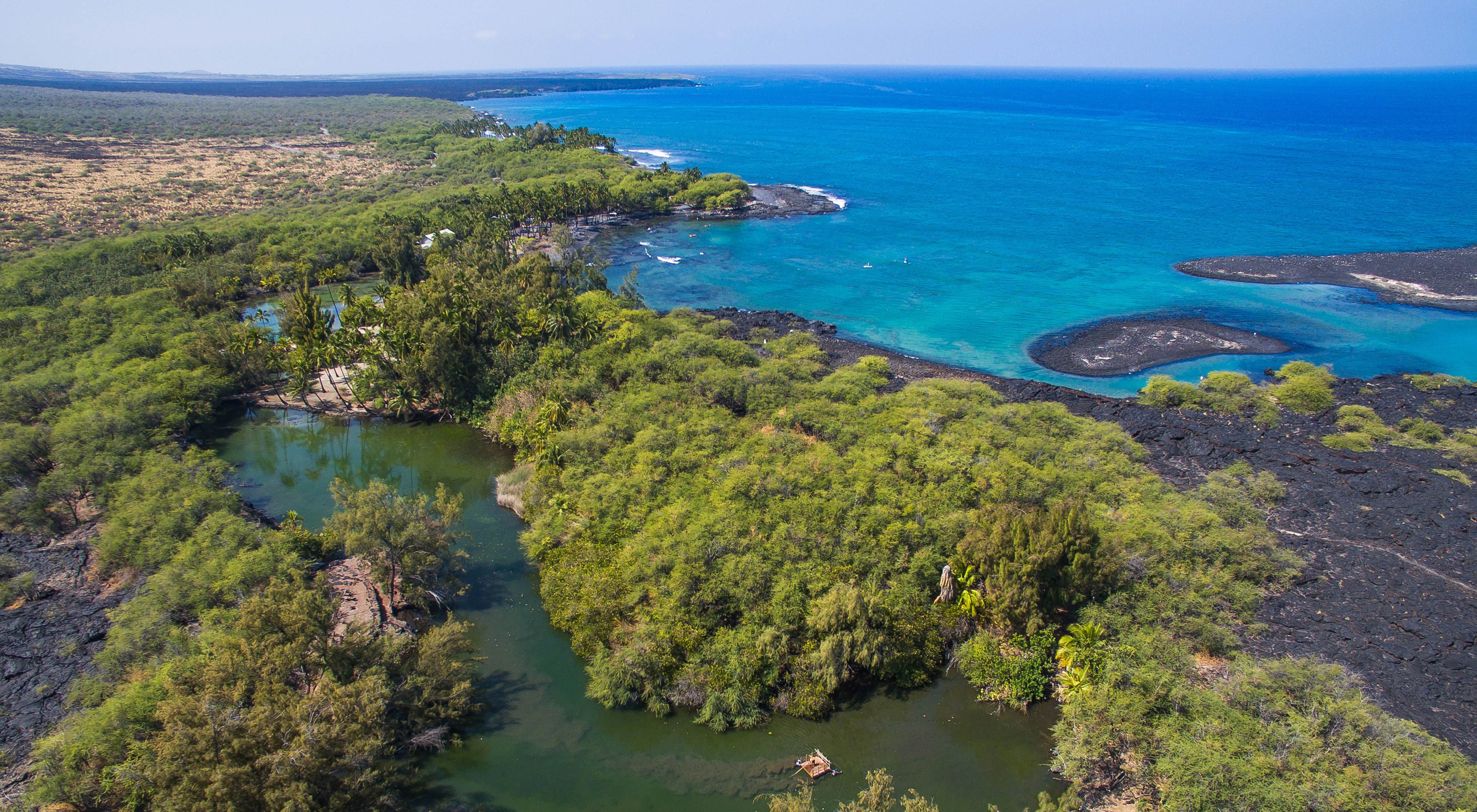Description
The royal fishpond at Kīholo stands as a testament to Native Hawaiian ingenuity—a highly refined aquaculture system that provided a sustainable supply of fish to the surrounding community for centuries.
In 2011, this historic cultural treasure was donated to TNC by Angus Mitchell, son of legendary hair care icon Paul Mitchell.
Ecological Significance
In Hawai‘i, fishpond estuaries function as a vital interface between land and coastal waters, providing habitat for native flora and fauna above and below their sheltered waters. At Kīholo, between three and five million gallons of submarine groundwater flows through the fishponds into coastal waters each day, boosting the productivity of nearshore coral reefs and reef fisheries.
Once prevalent along island shores, many fishponds were destroyed or fell into disrepair in recent decades. Fortunately, some survived, and today there is increased statewide interest in re-establishing these important cultural resources and enhancing local food security.
What TNC is Doing
TNC works in close partnership with community group Hui Aloha Kīholo to restore productivity to Kīholo Preserve. With help from expert dry-stack masons and more than 6,000 volunteers, we rebuilt the pond’s traditional rock walls and removed invasive trees and weeds that encroached on the pond and clogged waterways. After fencing critical access points to keep out feral goats, we began restoring native vegetation using seedlings grown in an on-site nursery. Together with our partners, we continue to monitor the effects of these efforts on water quantity and quality as well as fish abundance, diversity, and recruitment. Learn more about this special place and its hoa ‘āina (caretakers).
To participate in monthly volunteer workdays at Kīholo, contact TNC’s Hawaiʻi Island Marine Coordinator Barbara Seidel at barbara.seidel@tnc.org.
Impacts of Restoration
Kīholo now provides thriving habitat that hosts abundant marine life, including two dozen native fish species, endemic hapawai (mollusk) and ʻopae (shrimp). A 200-foot-long ‘auwai, or stone channel, connects the ponds to Kīholo Bay, which has a resident population of green sea turtles that travel from coastal waters to the fishpond to feed and rest. Threatened migratory seabirds such as the kioea (Bristle-thighed curlew) frequent the area, and endangered aeʻo (Hawaiian stilt) were spotted for the first time at Kīholo in April 2020 and have since been observed mating. Our recent reef resilience surveys have also found that the steep coral reef offshore of the fishpond is the most resilient to climate change impacts of 20 reefs studied in West Hawai‘i, suggesting this area has a better chance of surviving in the warmer climates of the future.
Beyond Kīholo
We share what we learn at Kīholo through Hui Loko, a peer learning network comprised of fishpond and anchialine pool managers from 19 sites on Hawai‘i Island. As a founding member and coordinator of the network, TNC is committed to sharing tools and resources that build coastal and community resilience, and to learning from the past to feed the future.
Learn more about our science and restoration and how we help strengthen conservation management and leadership so Hawaiʻi’s reefs can support healthy fisheries and prosperous communities long into the future.
